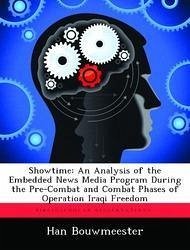Secretary of Defense, Donald Rumsfeld, and his Assistant Secretary of Defense for Public Affairs, Mrs. Victoria Clarke, initiated the embedded news media program. The intent was for the public to see directly through the media what happened at the front before others could affect public opinion. In February 2003, just before the start of Operation Iraqi Freedom, the U.S. Department of Defense implemented the Public Affairs Guidance on Embedding Media. The embedded news media program has set a new model for media coverage of future conflict, because it was a win-win-win situation for the military, the media and the public. The U.S. Department of Defense took risk with the program, but it worked. The program enabled the military to provide the public with timely, accurate and fair information on the operation, without violating OPSEC rules. It also catalyzed a better relationship between the military and the media. Many media experts and news producers were hesitant to participate in the embedded program, because the program would violate the idealistic rules of good journalism. It turned out differently. The media took enormous economic advantage of the embedded program. The program facilitated journalists to keep a tight rein on all military activities during the operation. Journalists got access to information and that had a fatal fascination for them. The American public was positive about the embedded program. Their collective opinion is that it was a "good thing." In the international environment, the program was not as effective as it was in the United States. The international press was less positive on the advance of the Coalition troops than their American colleagues. However, the lower interest in the international environment did not affect the effectiveness of the program in the United States. The embedded program proved to be effective during Operation Iraqi Freedom, but the Department of Defense needs to make improvements. The improvements introduced i








